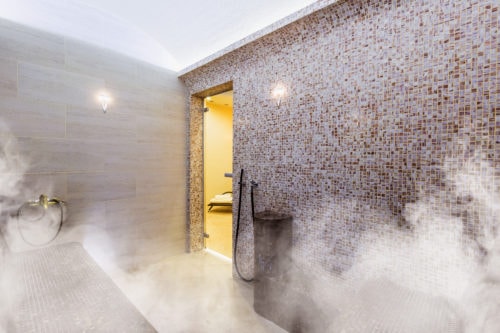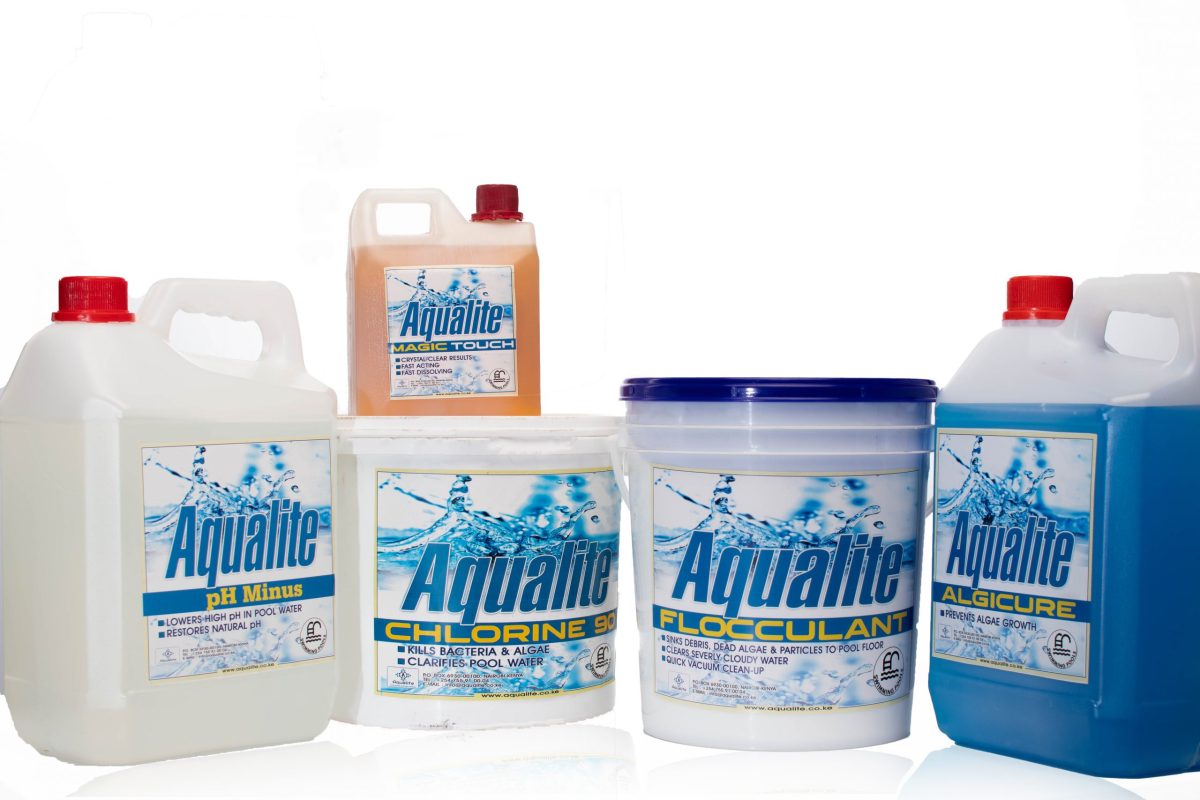Adding a stop in the steam room to your post workout routine can decrease your recovery time and help you feel healthier. While steam rooms should never replace treatments that your doctor has prescribed, they are a great place to unwind and reap some health benefits while you’re at it. A steam room can improve your health in several ways. Improves circulation Sitting in a steam room might significantly improve your cardiovascular health. A study of older individuals showed that moist heat improved circulation, especially in extremities. Improved circulation can lead to lowered blood pressure and a healthier heart. It can also promote healing of broken skin tissue. Lowers blood pressure Research shows that in a steam room, some people’s bodies release hormones that change their heart rate. One of these hormones, called aldosterone, regulates your blood pressure. When aldosterone is released from sitting in the steam room, it can help lower high blood pressure. This is part of the reason that the steam room makes you feel relaxed. Reduces stress Being in the steam room can also decrease your body’s production of cortisol. Cortisol is the hormone that regulates the level of stress that you feel. When your cortisol levels drop, you feel more in control and relaxed. Spending a few minutes in a relaxed state not only improves your health, but also helps heal your mind and improve your focus. Clears congestion Steam rooms create an environment that warms the mucous membrane and encourages deep breathing. As a result, using one can help break up congestion inside your sinuses and lungs. A research done on a group of children found that kids with respiratory infections recovered more quickly after steam therapy than kids who did not use steam therapy. Do not use a stream room if you have a fever. Promotes skin health Through environmental exposure, all sorts of toxins can become trapped underneath your skin. Steam rooms help solve that problem by using heat to open up your pores. The warm condensation rinses away the dirt and dead skin that can lead to breakouts. As a result, you may have clearer and more even-toned skin. Aids in workout recovery The pain you feel after working out is called delayed onset muscles soreness. Professional athletes have known for decades that heat therapy can help them recover from training workouts. Heat can penetrate deep into muscle tissue and help relieve DOMS. A recent study showed that moist heat works as effectively and also more quickly than dry heat in muscle recovery. Loosens stiff joints Warming up before a workout is critical in avoiding injury. Using a steam room as part of your warm-up could help you reach maximum mobility during activities such as running, Pilates, and yoga. One study investigated the effects. Heat was applied to the knee joint before activity, and as a result, the joint was far more flexible and relaxed. The results showed that heat can help reduce injury before a workout. It was also found that women especially benefitted from heat therapy on the knee joint to prevent injury. Burns calories When you’re in the steam room, your heart rate increases. If you use a steam room after an aerobic workout, your heart rate is already elevated, and the steam room can prolong that elevation. When used correctly, steam baths stimulate your body in ways that typical exercise does not. Sweating it out in the steam room isn’t a tool to lose weight quickly. Any weight you lose in the steam room is water weight, and you’ll need to replace it by drinking water to avoid dehydration. But using steam rooms regularly as a way to burn more calories at the gym could help your diet and exercise routine be more effective. Boosts the immune system Different forms of hydrotherapy are known to boost immunity, and steam rooms are no exception. Exposing your body to warm water stimulates leukocytes, which are cells that fight infection. Sitting in a steam room when you’re fighting off a cold shouldn’t be your first line of defense, though, as there’s no proof that the steam can kill a brewing infection. But using steam rooms regularly will give your bloodstream an immunity boost that could lead to you getting sick less often.
Monthly Archives: February 2019
We know how confusing Pool Water chemistry can seem especially to new Swimming Pool owners. But to understand your swimming pool water chemistry, you also need to understand which Swimming Pool Chemicals can reset the balance of your pool water. You can add chemicals for sanitizing, alkalinity, pH and stain removal. We put together a list of the common Swimming Pool chemicals to show you. Chlorine Chlorine is an extremely effective bacteria and algae killer. Chlorine is the chemical most often used to keep swimming pools and Jacuzzis free of bacteria that can be hazardous to humans. It kills bacteria though a fairly simple chemical reaction. The chlorine solution you pour into the water breaks down into many different chemicals, including hypochlorous acid (HOCl) and hypochlorite ion (OCl–). Both kill microorganisms and bacteria by attacking the lipids in the cell walls and destroying the enzymes and structures inside the cell, rendering them oxidized and harmless. CHLORINE 90 This is a powder form of chlorine with 90% available chlorine. The base is trichloro-isocyanuric acid and its use has the added benefit of reducing the chlorine loss from sunlight. The daily dosage rate can thus be reduced to 15 gms for every 10,000 litres when the water is clear and blue or 50 gms for CHLORINE “65” and CHLORINE “90” is often recommended as it helps to stabilize the water. CHLORINE 65 Also known as Calcium Hypochlorite, chlorine “65” is a granular form of chlorine and as the amount of available chlorine is 65%, the daily dosage rate is 25 gm for every 10,000 litres if the water is clear rising to between 75 and 150 gm for ‘shock’ treatment. Flocculant / Water clear Flocculant helps in bringing together all the small particles of dead algae or debris and combining them together into bigger particles that can be filtered out. The flocculant then sinks these particles to the bottom of the pool. You will now have to manually vacuum out these particles to waste. pH Plus Rainwater, Swimmers or just about anything that enters the swimming pool can affect the pH level. pH plus (alkali, soda ash or sodium carbonate) is used for increasing the recommended pH level of your swimming pool water when it falls below 7.2. The ideal ph level is between 7.2 and 7.6 pH Minus pH minus is used to decrease the pH level of your pool when it rises above pH 7.6. Add 500g of pH minus per 100m of pool water in soft water areas and 1kg pH minus per 100m of pool water in hard water areas. The quantity required will depend on the total alkalinity and calcium hardness level of the water. Add pH minus every day until the correct pH is achieved. Algaecide Algaecide is algae preventative. The algaecide works in conjuctionwith chlorine to kill the algae cells. Algaecide should be used after every chlorine treatment (recommended weekly) to support your chlorine as it works its magic. Magic touch Magic touch is an organic algaecide, which is used to improve the clarity of the water. The dosage rate is 200ccs (gms) per 10m3 (10,000 litres) and a single dose is normally sufficient to kill all the algae in the pool. Hth Sparkle it Sparkle It is a water clarifier which clears cloudy water and aids filtration. It contains liquid flocculators and should be used when the pool water is cloudy or lacks sparkle. Add up to 1 litre of sparkle It to the skimmer basket or to the line strainer and then allow the water to circulate for 12 hours before switching the pump off preferable overnight. The dirt deposited can then be vacuumed off the pool floor. The filter should then be backwashed. Anti-Stain Anti-stains are detergents specially formulated for use in swimming pools. They are effective in the removal of scum from the top tile layer as well as for cleaning handrails and other exposed pool accessories. It is normally applied by cloth but where the staining is excessive a scouring pad can be used. In nutshell, To maintain a safe and healthy swimming pool, you need to keep your pool chemicals at the following levels: pH: 7.4 to 7.6 Alkalinity: 100 to 150 ppm Calcium Hardness: 175 to 225 ppm and 225 to 275 ppm for plaster pools For Chlorine or Salt Water Pools: 1 to 3 ppm (I recommend you keep it at 3 ppm)


